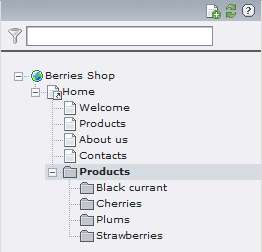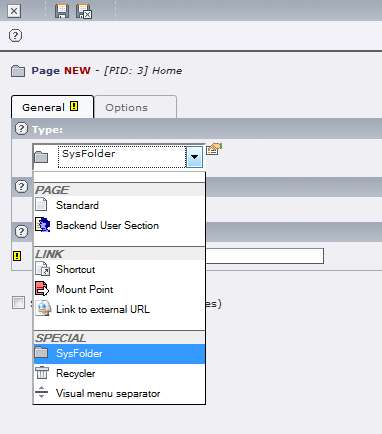For adding a new product to the online shop, you need to first prepare:
Accordant configuration for plugins (in our shop, it is tt_products). Also, you need to add plugins into the web shop.
Sysfolder—where you will store product records.
Created category and product records.
In our example we created records dividing each page like a separate category; categories read information from a separate sysfolder. The easiest way to do this dividing is to create a new folder in the site map where child folders will be stored, as in the following screenshot:

For creating a SysFolder, from the page module you need to click on the New page icon in the root page. SysFolder creation is similar to new page creation. You need to choose SysFolder in the drop-down menu, as you can see in the following screenshot:

Working with TYPO3, you will rarely be in a situation where you need to create special system folders. You can also store records for specific extensions on regular...



